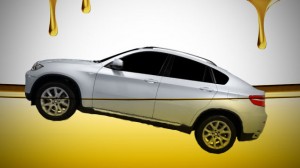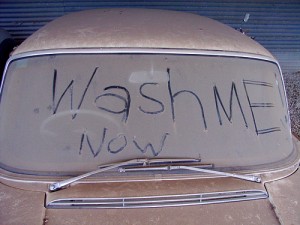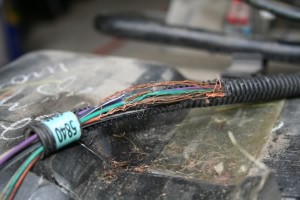There are two pretty simple things almost anyone can do – no tools required! – to keep almost any vehicle running reliably for many years after the warranty expires.
Don’t abuse it.
And:
Use it.
Easy – right? Surely. Yet, many people inadvertently fail to practice one – or both. In part, because many people don’t realize what they’re doing – or not doing.
Abuse, for instance. The word is harsh. It conjures thoughts of revving an engine to redline at cold start, with Wesson oil in the sump. Or neutral dropping an automatic transmission (a way of getting a not-powerful car to do a burnout… until the transmission breaks). But abuse also encompasses such things as neglecting to replace filters when necessary; failing to change out fluids other than the obvious ones (such as the brake fluid in the slave cylinder circuit in modern cars with manual transmissions), the use of other-than-specified lubricants; improper or incomplete service (such as changing an air filter but forgetting to clean the throttle body), driving around for a long time with the “check engine” light on, prolonged idling; frequent very short trips (the engine rarely runs long enough to reach normal operating temperature). Stuff like that.
More frequent (and attentive) maintenance is required to counteract the effects of such hard use … assuming you care about the useful life of you vehicle and would rather pay a bit more today rather than a lot more tomorrow.
Cosmetic care falls into the same category, incidentally. It’s abusive to not occasionally wash your vehicle. Everything from bird droppings to acid rain will – if left to sit – eat into the finish, leaving you with an ugly car. And – quite possibly – a prematurely rusty car. Washing – and at least occasionally waxing – the paint will help prevent both. In winter – if you live in an area where road salt is used – it’s smart policy to run the car through a car wash once a month or so. In particular, a car wash that has an underbody spray system to wash off the road salt that will otherwise accelerate the rusting out not just of the obvious stuff people talk about like the frame, but also things like brake and fuel lines and the mounting brackets they attach to. When those rust out, major headaches will ensue. (See here for an example.)
Leaving a car to sit for long periods is not restful. In fact it can be as harmful to its health as overt abuse. In fact, it is a form of abuse to leave a car sitting for long periods – if not “prepped” to sit for long periods. Why is it harmful to your car’s health to just leave it sitting? Let’s count some of the ways:
Flat-spotted tires.
Sticking brake calipers/deteriorated brake fluid/rusting-from-the-inside-out brake lines.
Dead battery.
Contaminated engine oil (even if “fresh” when left to sit, it will become not-so-fresh after a few months of congealing in the crankase).
Dry-rotting – and soon, leaking – seals (engine, transmission).
Mice eating the wiring.
Mold.
Infrequent/occasional use falls into the same category – if some preventative steps are not taken. These include:
Keep the fuel in the tank as fresh as feasible (use stabilizer) and topped off (this will reduce problems associated with condensation build-up in the tank as well as problems arising from deteriorating fuel).
Disconnect the battery or (better) hook it up to a maintenance charger.
If stored outside, wash the car off once a month to prevent accumulated muck from eating into the paint.
If stored indoors, place mice/rat traps in the vicinity to keep them from burrowing into – and eating – the car’s electrical guts.
And – most important of all – start and run the engine and drive the car for at least 20 minutes at least once a month. This will keep the tires from flat-spotting, allow the engine to warm up enough to burn off contaminants, circulate oil and hydraulic fluid through the various systems, which will also keep seals in good shape and help prevent dry rot and leaks.
A car that’s mostly used for very short hops – and rarely driven faster than 45 MPH – should be taken out on the highway (or equivalent) at least once a month and operated at highway speeds (60 MPH or faster) for at least 15 minutes. This will have the same salutary effect on your car that walking/doing physical activity with your body will – as opposed to lying in bed all day.
Cars – like our bodies – were meant to be used.
And not abused.
If you value independent media, please support independent media. We depend on you to keep the wheels turning!
Our donate button is here.
If you prefer to avoid PayPal, our mailing address is:
EPautos
721 Hummingbird Lane SE
Copper Hill, VA 24079
PS: EPautos stickers are free to those who sign up for a $5 monthly recurring donation to support EPautos, or for a one-time donation of $10 or more. (Please be sure to tell us you want a sticker – and also, provide an address for us to mail the thing to!)













This also applies to air conditioning. You need to run it for a bit once a month no matter how cold it is. The compressor is shaft-driven of the belts in your car, and the shaft goes through a seal in the compressor. On the other side of that seal is the refrigerant and lubricant that circulates through the system. Running it keeps the shaft and seal lubricated. If you don’t run it, then the seal dries up and the refrigerant leaks out. No more air conditioning. A true case of use it or lose it.
Good tip, Paul – thanks!
What is considered a long time to let a car sit without driving it?
Hi Doug,
For me, it’s about a month.
Anything longer than that makes me nervous!
Admittedly I only take my car out once or twice a week since getting my current job- I take public transit to work to avoid the hassle of the freeway and downtown parking/drivers- but it’s 13 years old and still going strong just by taking good care of it.
Whew! I’m relieved to see that the use of my old Plymouth Volare (slant six, four-speed OD) matches your recommendations. Many years ago I parked my 64 Olds for months, never starting it. When I did, it leaked out of just about seal and gasket it had. Talk about learning in the Automotive School of Hard Knocks.
Hi Ross,
Yup!
It’s a little counterintuitive (how could it hurt a car to keep it snug under a cover and parked in the garage and almost never drive it?) but it’s absolutely true.
Jay Leno reportedly has a staff of guys who make sure all his cars get driven regularly – for just this reason!
To paraphrase Mel Brooks: “It’s good to be the host of the Tonight Show.”
“Jay Leno reportedly has a staff of guys who make sure all his cars get driven regularly”
I. Want. That. Job.
Will work for free.
I’d do it, too.
Just gibs me a loft apartment above the garage in exchange… I’m there!
So cars never need a rest or a “vacation”?
> the use of other-than-specified lubricants
This is the one that many enthusiasts goof up. They believe the manufacturer when they say “Oh of course it’s good for your car!” when really, it doesn’t meet specs. Or they equate “more expensive” being the same as “better”.
Tightwads have a similar problem, but in the other direction. “They say it works in my car, plus it’s cheaper!” It might be cheaper, but it probably is for a reason, and that missing ingredient is what’s needed to keep the system working for a long life.
Some good reading:
http://www.consumersdigest.com/automotive/motor-oil//view-all
What cars prefer which factory fluids can vary.
For a Honda, you want Honda-brand fluids for transmission, differential, coolant, and power steering. Everything else (brake fluid, engine oil, washer fluid, transfer case) you can use a major-brand fluid.
When I bought my ’68 Olds Delta 88, it had 47,000 original miles on the odometer. That was about 1,000 miles A YEAR. It was owned by what we people of Slavic descent call a “studda bubba,” garage kept, and not driven even on rainy days.
Nice and cherry, right? Wrong! It had more issues than cars with three times the mileage…almost all of the rubber parts were dry rotted, the transmission was full of sludge to the point where the clutch packs deteriorated, the fenders rusted where moisture got trapped inside, and on top of everything else, there was a mouse nest under the dash.
And for you folks with new cars: Not driving them often/far will send your catalytic converters to an early grave, because the converters never heat up enough to burn off all the pollution.
Amen, Eric, particularly about just parking a car and letting it sit around unused. Fuel system, brakes, even electrical system goes to pot.
The tips you give are spot-on, particularly about brake fluid which is something most people rarely think of. If you flush out your fluid every couple of years you’ll have far fewer problems with the hydraulic system. Another area that frequently gets neglected on older vehicles is the rear axle lubricant. Sometimes that stuff gets forgotten and left in there for decades!
I’m always suspicious of old cars with extremely low mileage. If they’ve been sitting around unused for long periods of time, even if they look great a lot of mechanical restoration will likely be needed.
A differential drain plug makes gear oil changes a lot faster, easier, and less messy. Some vehicles provide one while others don’t.
Hi Marc,
Yup – unless the little SOB is rusted in place!
I always advise people who’ve never changed differential oil to first loosen/remove the fill plug. Few things are more fun than draining the lube out of differential or transmission, then discovering the fill plug won’t budge….
Good advice. It never hurts to apply Liquid Wrench twenty-four hours in advance. I also keep a set of Irwin sockets on hand to grip rounded heads. They’re a little pricey but far cheaper than the costs associated with hiring a tow truck and professional mechanic.
I ran my 1992 Holden Commodore wagon for 411,300 km. The motor gave out. It had regular oil changes. The axle never had a fluid change, only checked it 5 times. Never leaked or had any probs at all with the axle, the only major assembly on the car that had no troubles.